China1 has long fascinated the West. The source of tea, silk, porcelain, and other valuable commodities drew traders, but the Chinese were suspicious of the barbarians. By the time of large-scale European involvement in the Far East, they demanded payment in silver, and restricted trade to Canton. Due to the demand for tea, British silver reserves were dangerously low by the early 1800s, and the East India Company began to search for a new trade good. They quickly latched onto opium, extracted from poppies in Bengal, as an ideal choice. There was one slight hitch, though. Opium was illegal in China.
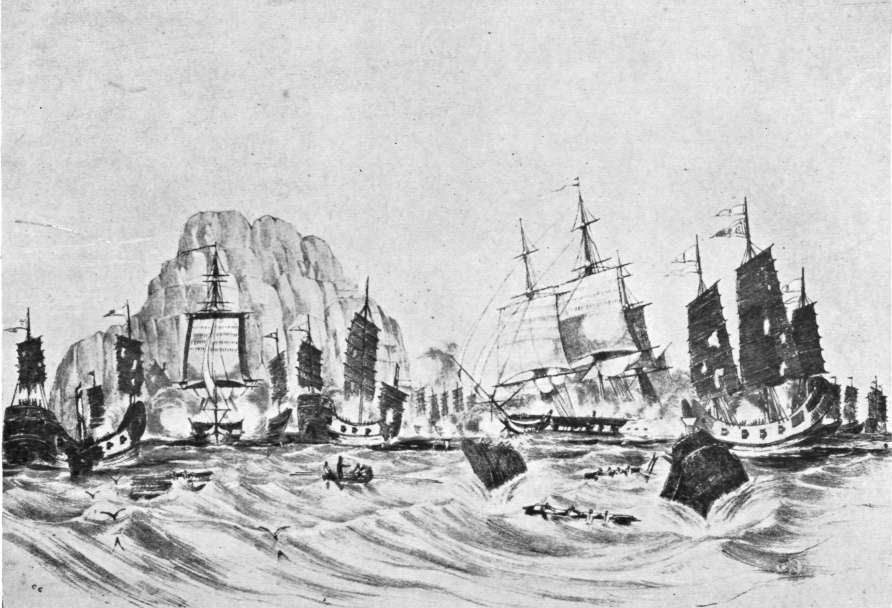
That didn't actually stop anyone, and by the 1830s, the opium trade was roaring, and addicts were becoming an increasing problem in China,2 as was silver being drained from the economy to pay for all of the opium. In 1838, a Commissioner by the name of Lin Zexu ordered 1,000 tons of opium destroyed, infuriating British merchants, who petitioned their government for compensation. Parliament refused to pay for the opium, but after a successfully lobbying campaign, declared war on China instead.3
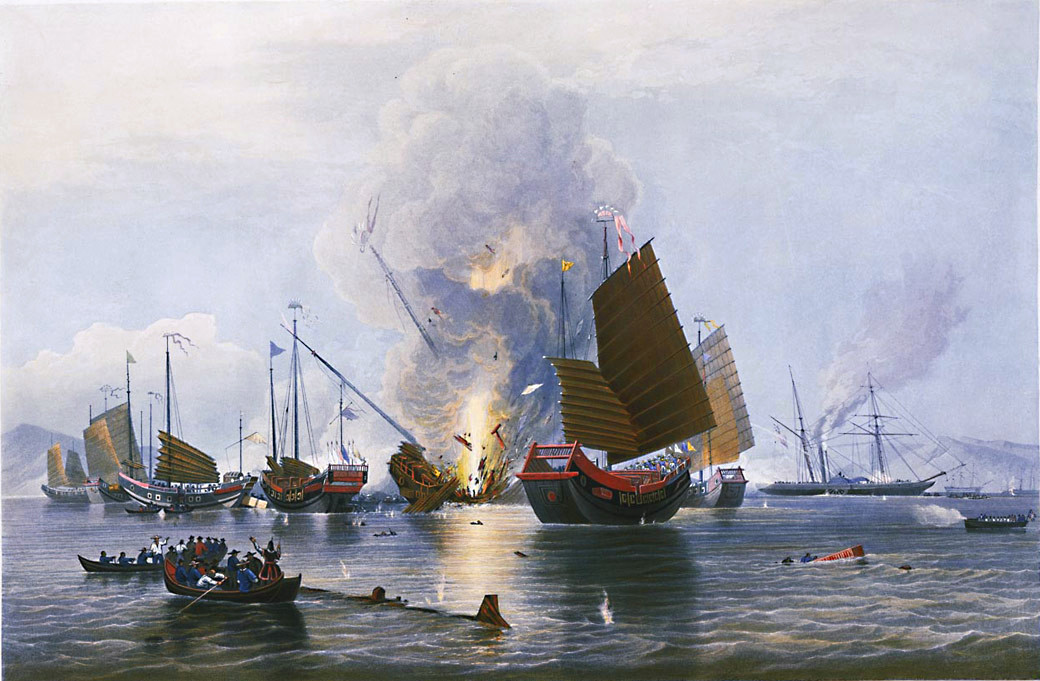
Nemesis destroying Chinese war junks
The British couldn't hope to match the Chinese numbers on land, and had to rely on naval forces for mobility and firepower. The extensive Chinese river network allowed them to take these advantages inland, thanks in large part to the efforts of RN surveyors in the 1830s. The first major target was Canton, on the Pearl River. The British captured the forts at the mouth of the river, lead by Nemesis, the world's first iron-hulled warship.4 More battles followed as they ascended the river, including a hazardous expedition up the Broadway River, which was often only 6' deep, barely enough for Nemesis to stay off the bottom. Eventually, Canton itself fell despite a major Chinese counterattack.
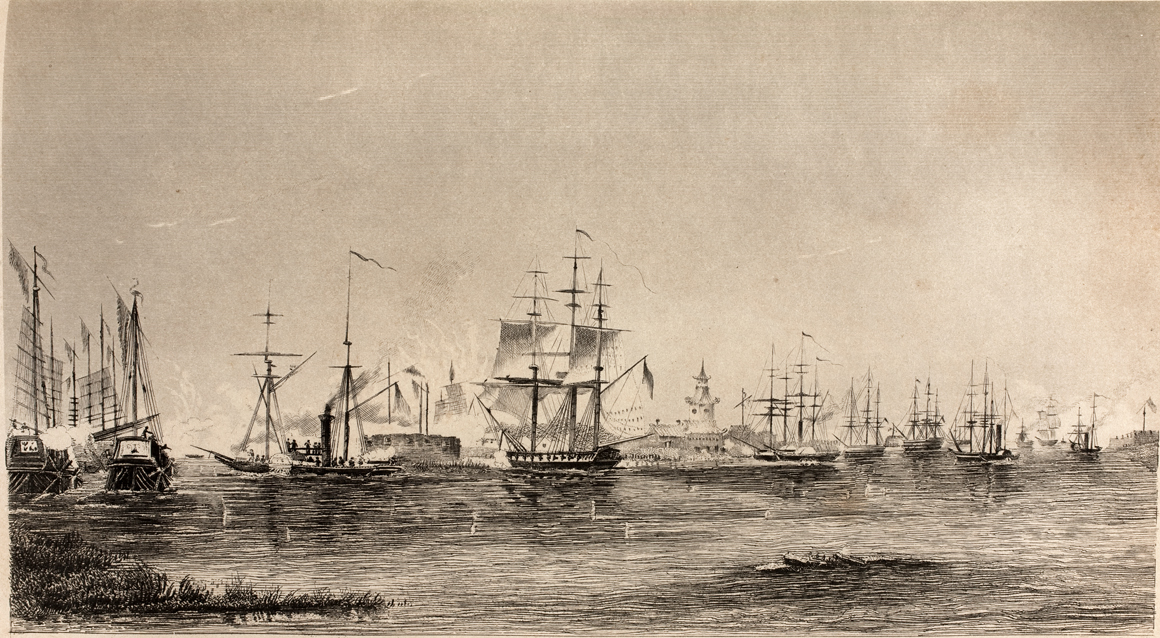
Shanghai is taken by the British
But even this wasn't enough to bring the Chinese government, long accustomed to considering itself the center of the world, to the negotiating table. Another blow would be needed, and the British launched an expedition up the Yangtze. Shanghai fell quickly, and the British advanced upriver, eventually taking Chinkiang, at the junction of the Yangtze and the Grand Canal. Cutting the Grand Canal blocked the grain taxes that supported the Qing government in Peking, ending the war a month later with the Treaty of Nanking, which opened up more ports in China for foreign trade.
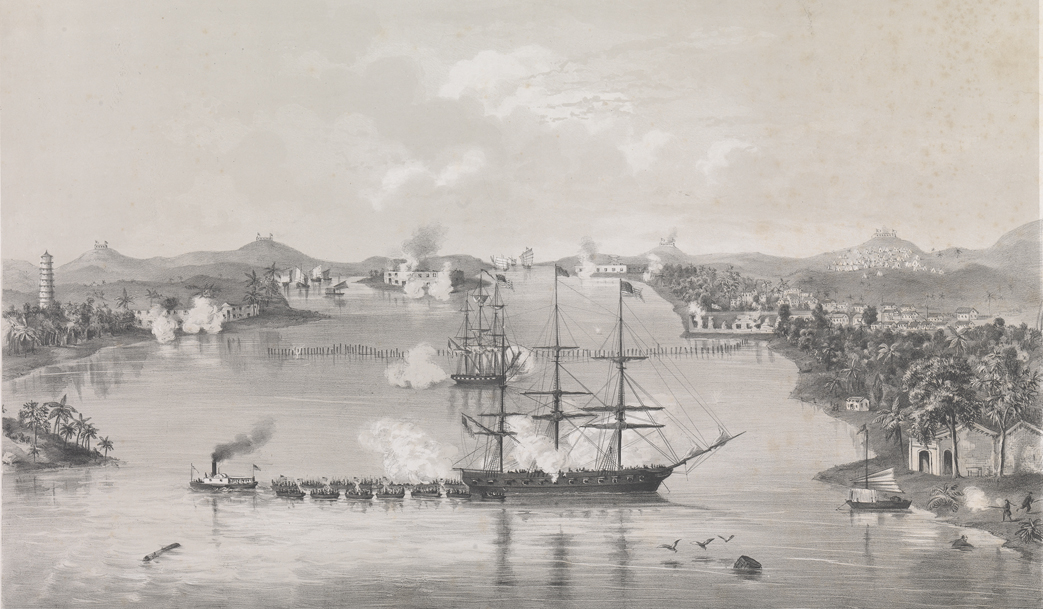
American ships go into action against the Barrier Forts
Increased opportunities for trade brought an increase in foreign military presence, although foreign involvement along the Yangtze was curtailed by the outbreak of the Taiping Rebellion, the second-bloodiest conflict in human history. It ran from 1850 to 1864, and saw both sides using naval forces, including a large number of gunboats operated by the European-officered Ever Victorious Army. Elsewhere in China, tensions between the locals and Westerners remained high, and in 1856, another war broke out over the Chinese seizure of a British-registered junk. The British promptly steamed up the Pearl River and bombarded Canton, fighting a number of battles in the Pearl River with both junks and fortifications over the next few months.5
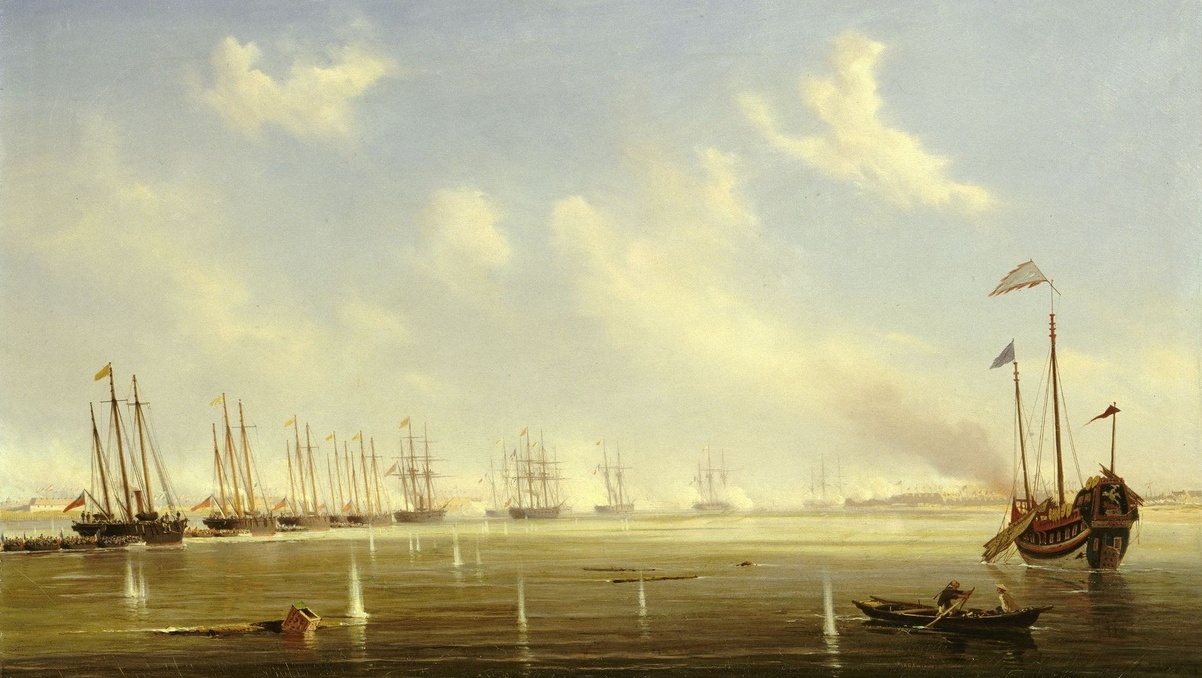
The first attack on the Taku Forts
The French soon joined in, and the first act of the allies was to capture Canton again, the 5-to-1 Chinese advantage being counterbalanced by the firepower of ships in the Pearl River. Anther river was brought into play, the Hai, which connected Beijing to the sea. In early 1858, the Allies seized the Taku Forts which guarded it, then handed them back under a treaty which opened the Yangtze to foreign navigation when the Taipings were defeated.
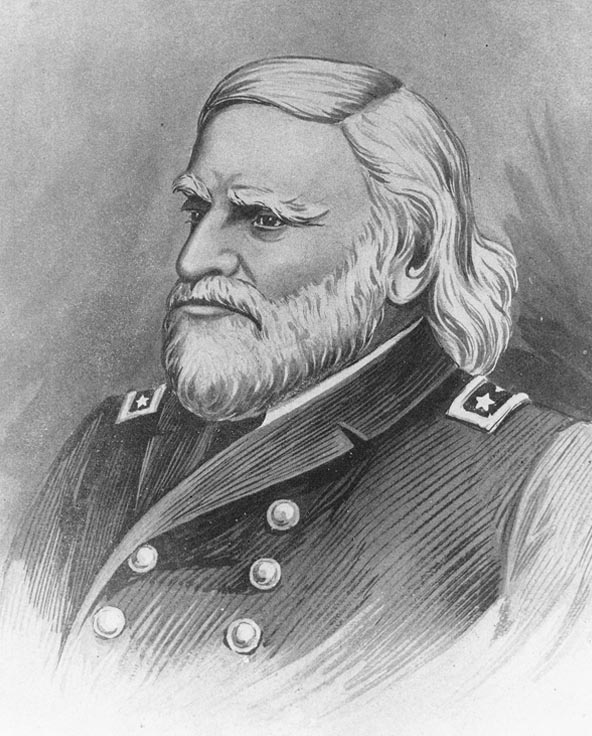
Josiah Tattnall
It would have been simple if this ended the war, but somehow it didn't, and a year later, the British and French attempted to seize the Taku Forts again. This time, they were repulsed, despite the aid of the supposedly-neutral Americans. Commodore Josiah Tattnall, watching the action, couldn't stand to see the British defeated and sent in his boats to take off British casualties. Later on, he discovered several of his men black with powder residue, and when asked what they were doing, was told that "they [the British] were a bit short-handed with the bow gun", an interesting explanation for the first time that servicemen of the two nations fought side-by-side. Tattnall defended his actions simply, claiming "Blood is thicker than water".
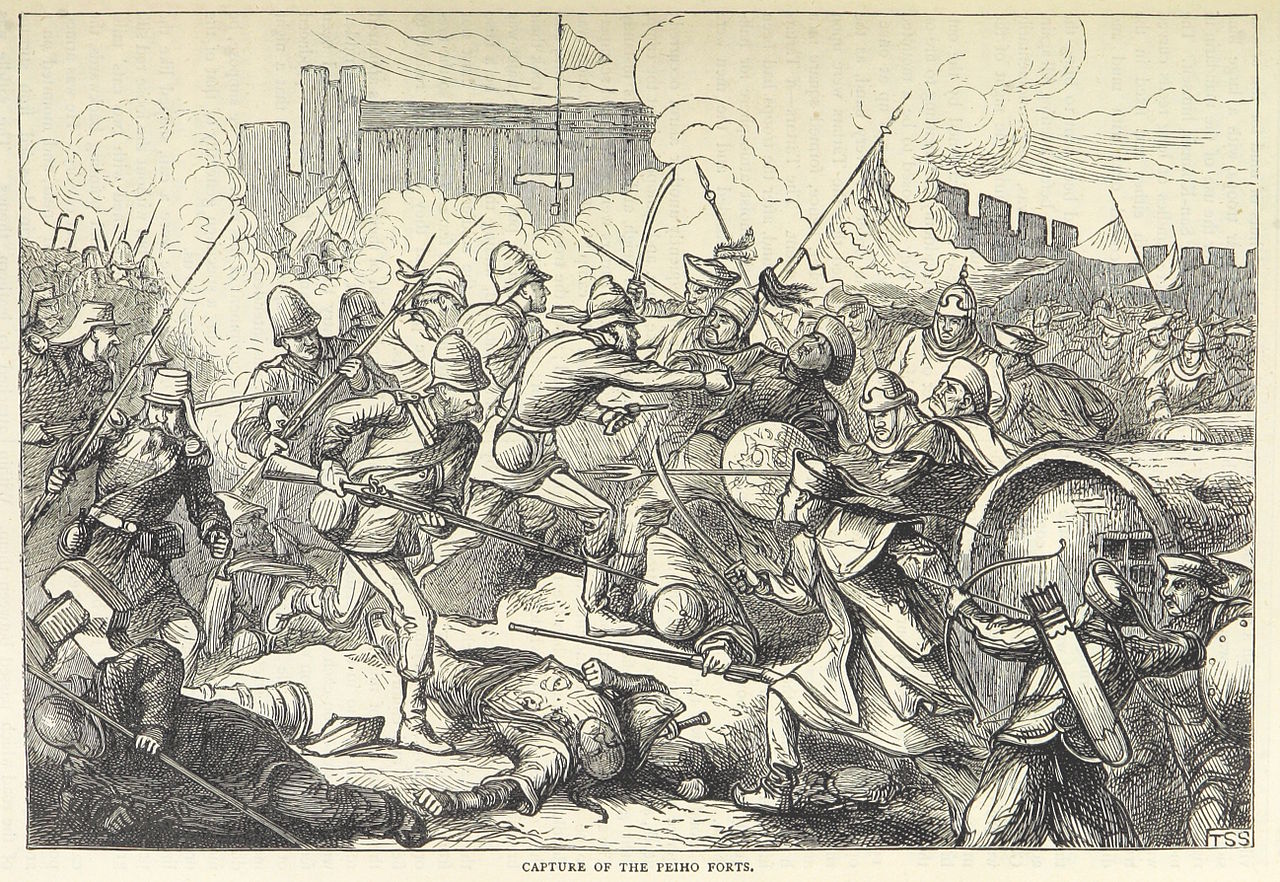
The Taku Forts fall again
In 1860, the British and French returned with more troops and took the Taku Forts easily, then pushed up the Hai before turning inland toward Peking. They brushed aside Qing resistance despite being heavily outnumbered and ultimately forced the Chinese to agree to the Convention of Peking, which ratified the previous treaties and opened much more of China to Western trade. The whole situation was marred when the Chinese seized a group of diplomats under safe-conduct and brutally tortured most of them to death, an act avenged by the destruction of the Old Summer Palace.
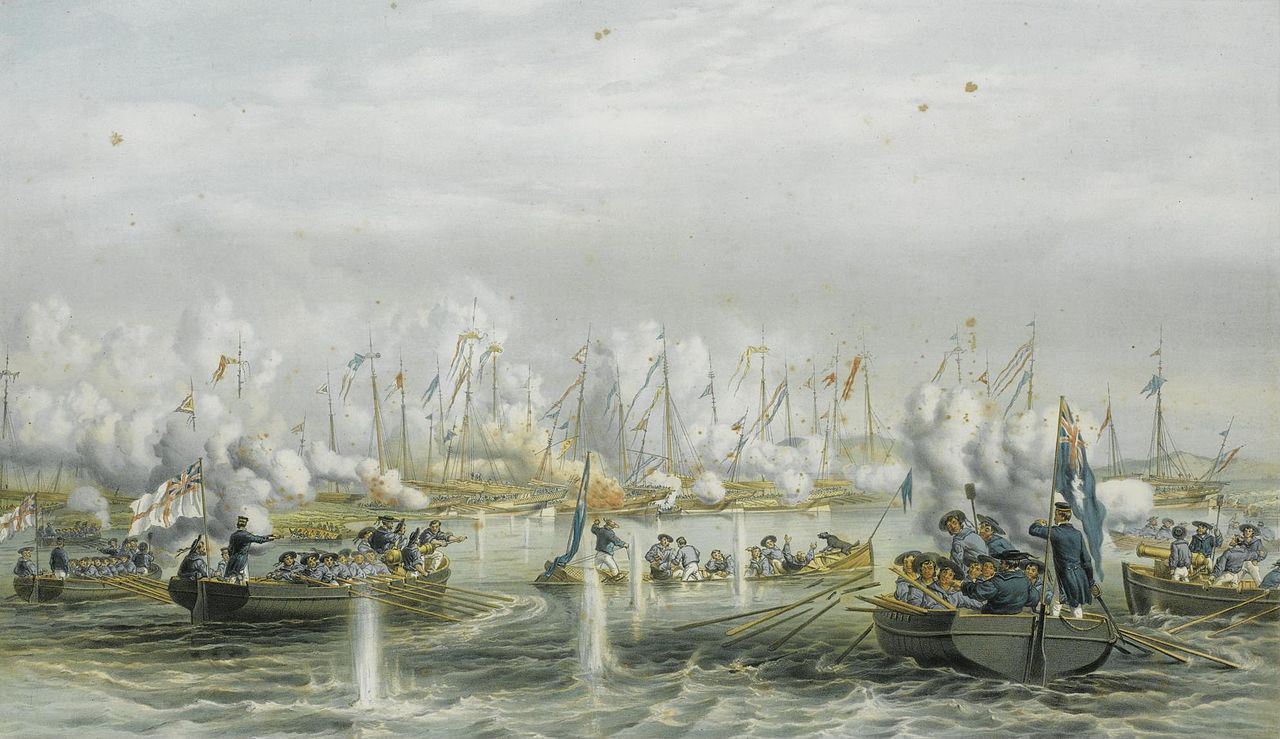
The ultimate result of the war was that China was now open to foreign trade, and that trade flowed along the rivers as the easiest routes into the interior. But the Qing government, already weak, was now on the edge of dissolving entirely, and the traders would require protection from warlords, bandits and mobs. And the easiest way to protect trade flowing along the rivers was with gunboats traveling those same rivers. Thus was born the Yangtze Patrol, a multinational flotilla of gunboats that would spend the next 80 years enforcing their laws in someone else's country. We'll pick up their story next time.
1 Use of rivers and lakes in China for both trade and war goes back thousands of years, with notable examples including the use of the Yangtze as a barrier at the battles of Red Cliffs and Caishi. Later, the Battle of Lake Poyang gave the nascent Ming Dynasty control of the Yangtze, a critical factor in its rise to power. Although not technically in China, the battle of Baekgang was fought by Tang China in Korea against Japan. Unfortunately, a deep look at early Chinese riverine history would take time and resources I don't have right now, so I'll focus on the situation in the 19th and 20th centuries. ⇑
2 It's estimated that before the Qing government cracked down on the opium trade, 27% of Chinese men were addicted to the drug. ⇑
3 The Chinese requested a bond banning trading in opium on pain of death, which the British authorities ordered their merchants not to sign. Some traders who didn't trade in opium, usually for religious reasons, signed anyway, leading to the rather odd spectacle of the British blockading Canton against their own merchant ships. ⇑
4 Interestingly, Nemesis belonged to the East India Company, not the Royal Navy, and so lacked the "HMS" prefix. She held up well in battle, although this may have been because of the warm conditions in southern China. In colder weather, her hull probably would have been brittle and might have shattered when she was hit. ⇑
5 The USN got involved in this, attacking the barrier forts on the Pearl River after an American launch was fired upon. ⇑

Recent Comments